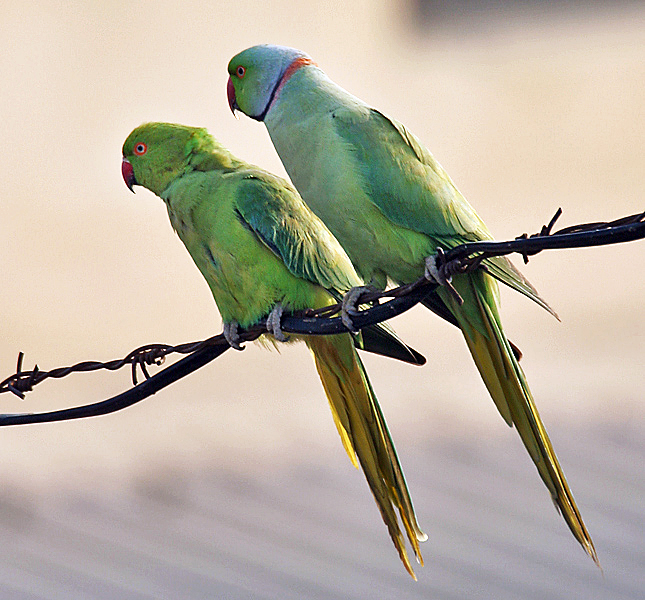Newbridge, January 30th 2015
All-colour show by
the beaky blinders
A damp, cold end to a quiet January along the valley, sleet and snow
showers swept in by a bitter north westerly, the ground, when not frozen,
sodden with a mat of decaying leaves, the floor of the wood littered with twigs
and branches brought down by gale force winds earlier in the month. Migrant finch flocks are all but absent,
winter thrushes are few and far between, but as the daffodils begin to push up
through the playingfield grass and the days begin to lengthen there are already
signs of change in the world of birds. Territories
are defended, pair-bonds are established and confirmed, and an exotic species is
bringing a splash of colour to dull mid-winter days . . .
(Yes Ian, your birds did
land !)It’s January 22nd, the weather is calm, the wood dull and dripping. Crow, Magpie, Stock Dove, Nuthatch and Great Spotted Woodpecker call intermittently, Blue Tit and Great Tit chase and scold, when suddenly there’s a screeching call from above. Nothing seen at first, but then, against the flat mid-morning sky there’s a bright green shape, then two, close together, high in the trees. One bird is preening, the other pecking at the base of buds on the topmost branches, their slim yellowish green bodies, long tails and bright red bills in stark contrast to the greys and browns of a winter woodland. These exotic visitors are the two Rose-ringed Parakeets seen by Ian earlier in the morning flying towards the wood, birds which have been reported in West Park and at garden feeding stations in Whitmore Reans, Newbridge and along the Tettenhall Road since late summer. The species, which now nests in the West Midlands and which is firmly established in the South East of the UK, originated in central and north eastern Africa and in southern Asia. There have been captive birds in Great Britain since the mid 1880s, and in the 1930s small numbers were seen flying free in Epping Forest north east of London. Breeding was reported near Rochester in Kent in 1969, and by the late 1970s there were small nesting colonies in Kent and Surrey. Since then, as BBC television “Winterwatch” viewers will have seen recently, numbers in Greater London have risen dramatically, with thousands now roosting communally in parkland and at other green spaces. Small numbers have been reported in the West Midlands for decades, and in recent years nesting has been reported from the Sandwell Valley. There have been a handful of sightings involving single birds along the Smestow Valley since the 1980s, but this is the first time two have been recorded together locally. The effects nationally this species may have on native breeding birds is at present being investigated by Defra. Rose-ringed Parakeets are tree nesters, so woodpeckers, nuthatches and other species could be adversely affected. Certainly a Mistle Thrush that encountered our two birds in its breeding territory seemed uncertain how to react, approaching gingerly along a branch, then retreating as soon as the visitors squawked a warning. No wonder. It’s odds-on this was the first time the two species had ever come face to face locally. Watch this space!
Mid-winter reports from Dunstall Park lake have included a pair of Gadwall throughout the month (up to four birds have been seen there most winters since the early 2000s), up to seven Shoveler with a similar number of Teal, a pair of Mute Swan, at least eight Coot, with three or more Moorhen, up to three Snipe, a Grey Heron on 18th and a 1st-winter Grey Wagtail a daily visitor to the open Smestow brook culvert. Elsewhere on the racecourse up to 140 Canada Geese have been grazing on the central grass area, with three Greylag and a single albino of the same species, and 45 Lesser Black-backed Gull and more than 270 Black-headed Gull were present on 18th. At least one Common Buzzard visited regularly, a Great Spotted Woodpecker drummed from the oak copse near Tunstall Water Bridge from c.25th, and two Raven flew eastwards over the site on 18th. Two Nuthatch were with a Long-tailed Tit flock on 27th, and a Pied Wagtail pair were at their nesting territory in the hotel area on 4th and 27th.
Sightings from elsewhere along the valley included a Treecreeper in Newbridge wood on 16th, an immature male Kestrel perched by the Compton barleyfield on 22nd, and two Little Grebe (starting to show their summer plumage) on the canal by Newbridge wood on 29th. A Green Woodpecker called from the bottom of the barleyfield on 22nd, twenty three Redwing foraged on the school playingfield next to Newbridge wood on 27th, and a Bullfinch pair were on garden feeders by the old railway south of Hordern Road on 29th, the same day as a Coot was with Mallard and Moorhen on the canal by the Wildside Centre.
NB Dunstall Park is a restricted commercial site. Access is strictly controlled.
